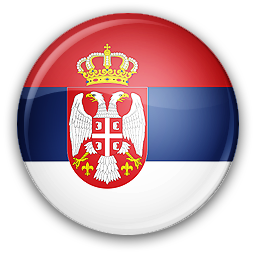Thermal power unit “Kostolac B1” dismantled. – the blades are the heart of the turbine, and they will be renewed. – Desulphurization systems for both units will be built as well as the systems for nitrogen oxides emission reduction. – The rehabilitated unit B2 is operating in full capacity.
At first glance, it is obvious that the company ”TE-KO Kostolac” has opened the largest construction site in Serbia. It was not opened yesterday. For more than a decade, in Kostolac something has been built, upgraded, expanded and modernized, but what is going on in the Thermal Power Plant “Kostolac B” and within, is without doubt an eloquent response to the question what it means to put millions of funds of convertible currency into tangible products, a new value.
Preparation of pipes in the field
We have not gone to the place of the sometime boiler and boiler pipe system in the Unit B1 that has been rehabilitated since March 1st this year, although that is the place where the coal burning process begins for the following power generation process. There was our photographer, who returned covered in visible layer of fine coal dust. He has taken photographs of removing parts of the piping system of the boiler and replacing them by new ones, made in China. The Chinese company CMEC is in charge for the installation of the new ones, which, with Chinese and sub-suppliers from Serbia, participates in the rehabilitation of the TPP Kostolac B. The first part of the boiler pipeline system has arrived to Kostolac, and the other one is expected by the end of May. Within the circle of TPP Kostolac B, there is an enormous pile of deposited lining sheet from the old piping system, and also the capacitor. A bit farther away from there, there are blocks of piled up new pipes and the Chinese, together with engaged workers from Serbia, are processing their ends and connecting them by gas welding.
A huge “walking“ crane is used for these pipes, operated by a man with very precise hand movements: there are no swaying of the load nor missing the targeted line of lowering. From a safe distance and equipped with helmets, we have witnessed the operation of transporting one huge pipe. While we were passing by huge blocks of neatly arranged pipes, some Chinese looked at us with certain curiosity, while others were greeting us smiling. Later on, when we strolled down the Chinese settlement, built in the land of TPP-KO Kostolac, near the Thermal Power Plant, there were more smiling faces than indifferent ones. One group has prepared a mixture for the concrete, shoveling sand and cement, obviously wanting to place concrete for one more part of the path through the developed settlement. Our colleague from Kostolac, Novica Antić spoke about a well-organized life in this settlement, about the time of leisure usually used for sports, but also for the additional training for the jobs to be done during the eight hour working time. The dismantling of the boiler system was done in three shifts, i.e. 24 hours a day. In the settlement there is a kitchen and a restaurant. They buy groceries wherever they can find them, and specific Chinese spices they find in Novi Beograd.
It crossed our minds how the language barrier was present and how it prevented us in communication with them, so that we could only show benevolence to each other. The locals told us how the Chinese had impressed them with their work discipline, dedication to the work and expertise. What the Chinese think of the locals we could not find out since we had not announced our arrival on time, in order to provide us the interviewees and an interpreter. We hope there will be another chance, the job has just started. To tell the truth, when we entered the mechanical workshop, it seemed as if nothing had been left (more precisely: not even an assembly). The dismantling of the Unit 1 has already been completed. As a lonely rider, the area in the lower part of the hall was dominated by renewed Unit B2, and everything else were separated parts of something which, recently was a whole machine, used to produce electricity. The very machine could only be imagined. We ask around for some parts, which appeared as part of the turbine or turbo generator, but we soon gave up.
Pace depending on the deadline
Ivan Dimitrijević, the lead engineer for maintenance of the turbo generator plant, which is directly in charge of the dismantling, boasted that all had been dismantled within the stipulated period of one month. He said that they the Chinese had helped them with their work and special tools, but it was not a contracted job, just assistance. “Here they are helping us, we help them with other work. Wherever there is a need. We all wish to meet the deadlines ” – said Mr. Dimitrijević.
In the machine room, we met people from the Polish company “Alstom”, with whom the rehabilitation of the turbines and turbo generators was contracted, with vital parts sent to Poland for rehabilitation. By August 1st, the renewed high pressure turbine module, should arrive, as well as the medium-pressure turbine inner casing and rotor, and two low-pressure turbine casings and rotors. The rehabilitated generator rotor will also arrive. The goal, as explained by Mr. Dimitrijevic, to provide the start of the reversing machine on November 1st . That’s the plan, and by “reversing machine” we understood as putting the machine into operation at low rpm, in order to control all that needs to be controlled and that the Unit could be connected on December 1st .
-The most important is that we are going to get new blades. They are the hearth of the turbine. The poor-state blades have decreased the power of the units in this power plant since it was built. None of the two Units could operate in full power that was designed and we have to rectify that – our interlocutor pointed out.
We said we had been told that he was to be blamed for all the chaos in the hall, and he replied that the dismantling had been the first and hardest phase where everything had been messy and it had to be cleaned.
At first, things were not easy, afterwards some complications occurred, it became harder than it was with the Unit B2. To tell the truth, it was a realistic consequence. This Unit was the first one to be put in operation. It has operated until recently, so almost 6-7 years longer than B2. It affected the machine naturally – he explained.
He added to the claim of my colleagues that the entire dismantling process had been under control, that he insisted on being in the hall as longer and frequent as it was necessary, not only for control, because all bear the responsibility for the job. He said: “The companies and people that are engaged here have huge experience with these kinds of work and we were constantly learning from them. These are lessons, and the entire school that will hardly repeat again. We have cooperated with ”Alstom“ on the project for B2.
While he listed the jobs he was in charge of in the mechanical workshop, we said it amounted probably 80 % of the Unit facility, and he replied smiling: “Please don’t let those from the boiler plant hear you“. He added seriously that objectively the relation is 50:50 %.
Radomir Perić, the production manager in TPP Kostolac B, explained us why the rehabilitation of the Unit 1 will last shorter than it took in the Unit 2. He said that the work on Unit „Two“ prolonged due to delay with funds inflow and granting of loans, so that the turbine was rehabilitated first and the boiler had to wait. Afterwards, the renewed turbine waited until the money were provided for the boiler, and while its rehabilitation lasted. All in all, the rehabilitation of the Unit B2 has lasted for three years. The “One“ was stopped on March 1str, and should be connected renewed again on December 1st this year. So, in eight months. We all hope everything will be carried out as it was planned.
– the plan is to assemble everything by the end of summer. Turbines and the generator is done by „Alstom“, and the turbines will be new ones, as well as the auxiliary stations for the generator. The boiler and pipeline are being done by the Chinese, and de-slaging system by EPS. Simultaneously, the system for flue gases purification, i.e. desulphurization, for both units at this power plant will be built.
Also, the reconstruction of the coal powder burner will also be done for the reduction of nitrogen oxides emissions, to which we are obliged according to the European standards on so –called large-scale fire-boxes, to be entered in force the following year – Mr.Perić pointed out.
The fire of Jules Verne
We are asking whether the reconstruction of the burner for reducing the nitrogen oxides emissions solve the issue of coal grain –size distribution, which caused plugging in the Unit B2 in the chute before the burner.
– The reconstruction of the burner for the nitrogen oxide emissions reduction will be carried out within the reconstruction of this place of coal burning to have better desulphurization. The entire reconstruction of the burner will contribute to nitrogen oxide emissions reduction and better efficiency of calorific value of coal, i.e. better burning of the coal powder. This is what lay ahead of us to do on Unit B2 which had been rehabilitated before the conditions of the EU were laid down decidedly in terms of large-scale fire-boxes, so that the system for reducing nitrogen oxides had not been done, and minimizing the grid did not turn out to be a good solution , so that now we have the fire you asked around- said Mr.Perić.
Zoran Vukčević, the engineer of the production for turbo generator plant, explained to us that the real fire was not as dramatic as it seemed on the screens and that at first it draws attention, but later on people got used to it. It is the shot from the burner where coal dust is re-burned, only that in that dust there are usually coal fragments which the crushing plant did not crushed well and that can plug the chute and go farther in the process as slag and are not burned, which is a waste of calories of coal.
Precisely for this reason the plan is to reconstruct the burner on B2. The aim is to reduce the emission of nitrogen oxides and increase the efficiency of calorific value of coal on this machine too.
Mr. Vukčević said that the new control and management system for the Unit B2 had been developed by the Institute „Mihajlo Pupin“, which does the same project for the Unit B1, in order to collect cca six thousands data (information) from the production, from all points of operation, starting from the coal entering the bunker, until the point of transferring the electricity to the transmission system, and the most of these pieces of information is online.
-While everything is in green, it means everything works alright. When on the screen, in any part of it, a yellow signal turns on, it means that a certain point should be checked. On the screen it can be seen how much there is room for intervention. If we have few possibilities, we shut down that part to prevent the tripping or God forbid major damage. Numerous devices operate here and thus much information. Everything is being monitored directly, on the spot, and simultaneously here, in the control room. We tend to keep as many devices we can in the automation system, although it is a big system and a very complex one – explained Mr. Vukčević.
He showed us how the water pressure and temperature are being monitored, amply and in detail. He said that in every moment he knew how much electricity was generated and how much taken over for own consumption. There are many information from the generator and the turbine, and data on the Unit operation are stored and are made available at all times. Mr. Vukčević said his working day starts by checking the current positions and the way the Unit operated in the previous 24 hours. So that he knows well what is going on and what happened. The best event is when everything is alright, within normal state.
Automated management
The half of the control room, where we conducted our conversation, while other employees were monitoring the status on their screens, was empty. It will be equipped with cabinets and all communication lines for collecting information from the Unit B1, when it has been rehabilitated and put into operation. In the same way as with the Unit B2, most information comes online, and the management is automated. We learned from ours interlocutors that around a thousand workers will be working here at full tear. In addition to the Chinese CMEC and its subcontractors from China and Serbia, here will be those engaged by PD TE-KO Kostolac. They are, as we have already mentioned, the Institute of Mihajlo Pupin and Polish Alstom, then Energoprojekt, BET Inženjering, Faculty of Mechanical Engineering, Feromont and PRIM.
They say that, besides the modernization and renewal of turbines and generators, the reconstruction of the capacitor and pumps will be carried out. The reconstruction of the mills will be done, the entire new plant for desulphurization, with the new tower, new electrical filter and many small, but significant details. Project documentation is timely prepared, and project realization is being monitored by the operative expert teams, who define tasks on a daily basis and evaluate what has been done. Once a week, these teams discuss the most important jobs at a joint meeting. There is also Project team at the level of PD TE-KO Kostolac who discusses the information on the project realization once in two weeks. At the level of JP EPS, the status of rehabilitation of the Unit B1 in TE Kostolac B is discussed once a month.
The first and second phase
More than a billion dollar worth loan from Eksim Bank will be invested in the rehabilitation of the thermal power plant Kostolac B and the construction of the new, third Unit for this thermal power plant. This project is part of the government arrangement of the People’s Republic of China and the republic of Serbia. The investment is split in two phases. The rehabilitation and modernization of the existing Units, with construction of the railway and port in the Danube river is the first phase. The second one is construction of the the third Unit and expansion of the capacity of the OPM “Drmno“. For the realization of the project first phase, the amount of 349 million dollars in allocated, and for the second phase 715,6 million dollars in total, out of which 613 million will be invested in the construction of the thermal power unit B3. The loan was granted under very favorable conditions, with three percent interest, grace period of five years and repayment period of 15 year. From the first phase, the rehabilitation of the Unit B1 is left to be done, and it has been just dismantled. The first phase includes also construction of the railway and the port. The preparation for the start of the second phase has been accelerated since last winter.
More power for Units
Rehabilitated unit B2 in Kostolac has been operated for more than a year in full power of 351 MW. According to Mr.Radomir Perić, such power is a result of invested means and works on improvement of technical and technological characteristics of the unit, which since it was built has not worked with rating capacity. It has operated on average with 245MW net power and relating to that period the power has been increased by 60 MW, after the rehabilitation. Also, the life cycle has been extended by 150000 hours. The Unit B1 will have the same performance, as it was planned, when in autumn the rehabilitation will have been completed. The total capacity of the TPP Kostolac B will be raised to more than a thousand megawatts when the new one, the third one is built, having the power of 350MW.
The completion of the first phase of the realization of the Chinese loan is planned for the middle of 2015, and the new Unit (B3) will be connected from the end of this decade.
Idea for the tender
The start of the construction of the railway in the length of 26 km, needed for the delivery of limestone used for desulphurization of flue gases from the Kostolac Thermal Power Plant, and can be used for other purposes, for the transportation of the goods, and people. The complicated issue when the licenses and consents are concerned is solved by the new Law on expropriation, to be now in the competence of the municipalities. But, it is still not certain when the construction of the port in the Danube river will start, which would have significant role in the transport of the equipment for the new thermal power unit, and then for tourist purposes since Viminacijum is very close. It was a big issue until the Agency for port management has been founded, because the license for works start could not be obtained. Ever since the Agency was founded, there are more and more obstacles. According to our knowledge, it is about the enforcement of the new laws which do not clearly stipulate the rights and possibilities, so that PD TE-KO Kostolac should firstly enter itself as a user of the lots in the Danube riverside, and then announce the tender for giving those lots in the Danube riverside. Kostolac has been entered in the registry as the beneficiary, and then it showed up in tender for those lots. But, others called in also. The construction of the port is a really good idea. It is not good that the Chinese creditor provided funds for the port, and Kostolac cannot withdraw them nor invest them without the licenses.







